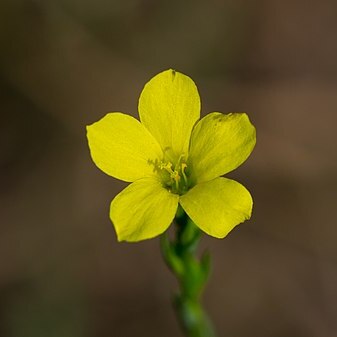Herbs, annual, 25–85 cm, glabrous. Stems erect to ascending, unbranched proximally, few to many branches above middle, conspicuously sulcate. Leaves: proximal 0–13 pairs opposite (often fallen at anthesis), distal alternate, appressed-ascending; stipular glands usually present, very rarely absent; blade linear to narrowly lanceolate, 7–30 × 1–3 mm, margins entire, distal leaves not ciliate, apex acute to subulate; midrib prominent, marginal nerves less conspicuous. Inflorescences open panicles; bracts glandular-toothed, not ciliate. Pedicels 1.3–4.7 mm. Flowers: sepals persistent, lanceolate, (3.1–)3.6–5(–7.3) mm, inner sepals more delicate than outer, shorter, margins not scarious, all very conspicuously glandular-toothed, apex acuminate, central and marginal veins conspicuous; petals pale yellow, obovate, 5–10 mm; stamens 3.3–5.7 mm; anthers 0.3–0.7 mm; staminodia absent; styles connate 0.2–1.8 mm at base, 2–4.5 mm; stigmas capitate. Capsules globose, 2.5–3.3 × 2.1–3 mm, apex rounded to acute, dehiscing freely into 10, sharp-pointed, 1-seeded segments; segments persistent on plant, false septa incomplete, margins prominently ciliate. Seeds 1.6–2.1 × 0.8–1.1 mm. 2n = 30.
More
Glabrous annual 1–3 dm, simple below, branched above into a dichasial cyme; lvs all or mostly opposite, oblong to obovate, 3–15 mm; pedicels very slender, terete, the lowest 10–25 mm, the upper shorter; sep glandular-ciliate; pet white with a yellow claw, 4–8 mm; staminodia tiny, triangular; fr ovoid-globose, 2–2.5 mm, fragile; false septa incomplete, long-ciliate; 2n=16. Native of Europe; intr. in disturbed sites from Nf. and N.S. to N.J. and Pa., w. to n. Mich. July–Sept. (L. pratense; Cathartolinum c.)

